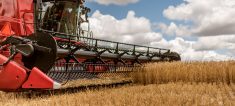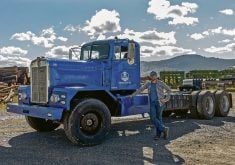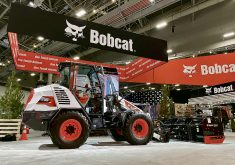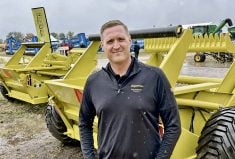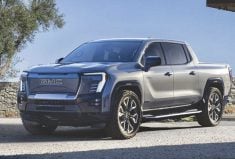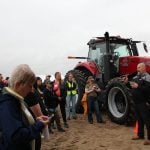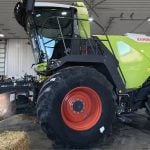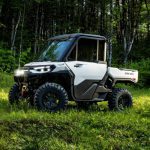As the 2018 sweet corn harvest approached, the Snyder family was worried their old pulling machine wouldn’t be up to the job.
“Old Bertha”, as she is affectionately known, has been pulling corn for the family’s farm near Caledonia, Ont. for nearly 20 years.
Why it matters: Farmers can’t always find affordable and perfect equipment for their farm, so sometimes they have to make it themselves.
Brenda Snyder, who farms with her husband Tom growing 60 to 80 acres of sweet corn for the local retail market every year, said they noticed she was “very tired” in the 2017 season.
Read Also
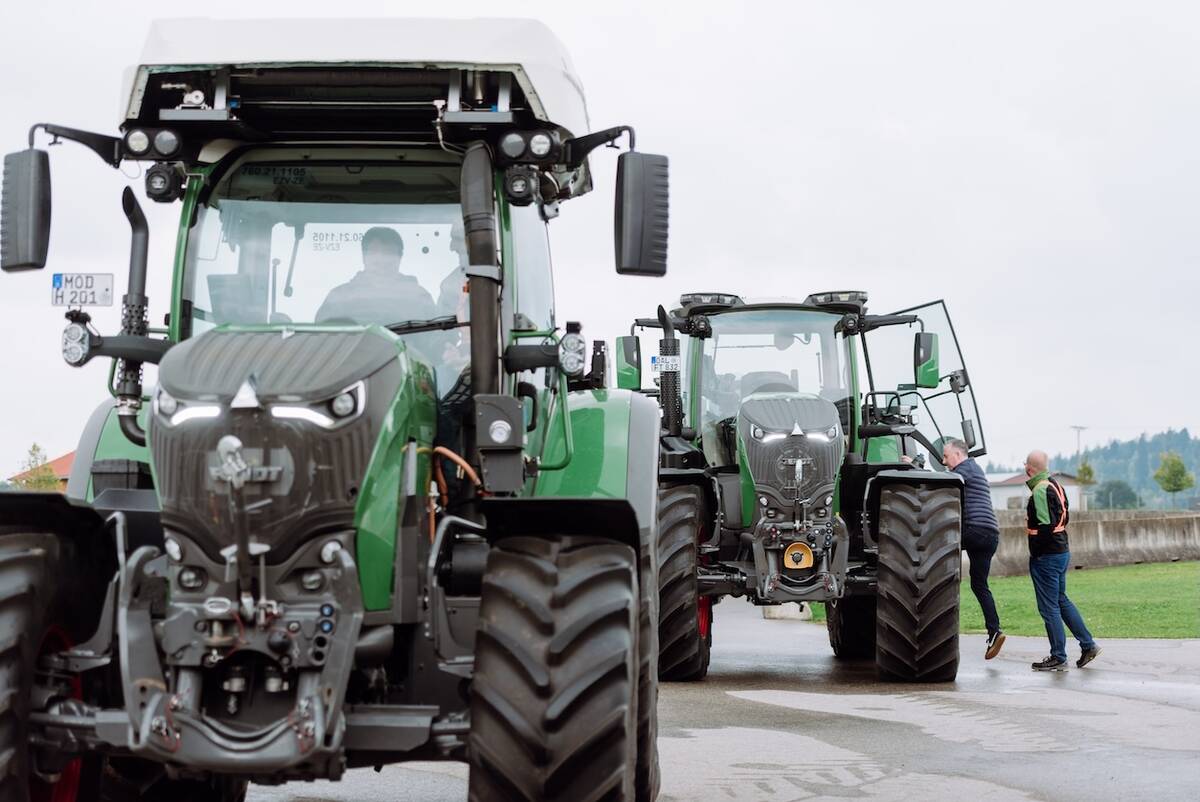
Agco worries about outlook for North America
Agco chief executive officer Eric Hansotia recently had both good and bad news to share about the demand for new farm equipment.
“She started to break down more than she was picking, and thankfully our season didn’t require her to pick every day because with the cool weather we couldn’t get corn to ripen,” she said.
As well, with only 16-inch centres, Tom said the tall, narrow profile made the machine precarious to drive on the hilly part of the farm’s acreage, which the Snyders knew would be planted to sweet corn in their 2018 rotation.
Old Bertha also has some attitude “and as with a lot of farm equipment, you have to know it to make it do what you want it to do,” Brenda said.
Old Bertha is so pernickety, in fact, that only two members of the family are comfortable driving it — Tom and his father Charlie. But with Charlie wanting to spend more time at the cottage each season and with growing concerns over her reliability and safety, “we had to start to think ahead,” she said.
Buying a brand-new machine wasn’t an option. “With small acres, you have to make the numbers work,” Brenda said.
So the Snyders made the decision to do what they had done before – design a custom machine that fits their needs.
Old Bertha was the second corn picker designed by the Snyder family. In the early 1980s, Charlie purchased a one-row Farmhall 400 picker when the farm first started growing a few acres of sweet corn as a sideline to its livestock operations, which included dairy, beef and hogs.
At that time, the corn was sold wholesale in Toronto, but the “dream was always retail,” Brenda said. The Farmhall was replaced after one year with a one-row FMC picker-type machine, but hand-picking the ends of the rows and pick-throughs was still necessary, and it sometimes cut too close to the cob, causing bruising.

If the Snyders wanted to make the transition to retail, they had to have hand-picked quality cobs. Charlie and Tom, with the help of Charlie’s brother (also named Tom), an agricultural technician and owner of a local equipment dealership, removed the picker head and purchased a puller-style head and designed to fit the existing machine.
Pull-type heads, unlike the picker-type, don’t cut cobs off at the stalk. Rather they cut the stalk, which then travels up a conveyor where the cobs are pulled off or roll off as they go up the conveyor. “It’s just like hand-picked,” Tom says.
But their retail business and sweet corn acreage expanded, and by the early 1990s it was clear the Snyders needed to make a change. Even with the puller-style head, a large amount of hand picking was required to open up the field and clear the ends to allow for turning.
So they used some farmer ingenuity.
“We thought, how can we make what we really want to happen based on what we can get?” Brenda said.
One thing the Snyders knew they wanted was the unit to be self-propelled. Although one- and four-row self-propelled pull-type units were available to purchase, neither one was a good fit for their operation.
Instead, they purchased what became Old Bertha. She joined the farm as a 20-year old, self-propelled, one-row FMC picker-style machine. The Snyders scrapped the existing head and designed their own two-row puller-type head. They made use of the existing hydraulic pumps, but added the hydraulic motors they needed to the head.
“What they didn’t know, they learned,” Brenda said.
Over the years, Old Bertha received some additional modifications, such as a ladder and a roof, jokes Brenda, and the fan that blows the leaves out of the loads was also improved. Old Bertha served the family well as they converted their operation to 100 per cent retail, but the 2017 season showed the Snyders that they had to make use of their farmer ingenuity once again and design a newer Bertha.
“We knew what the design needed to be and we had done it before,” says Tom.
Critical to the design for a new Bertha was weight, as the farm has been implementing sub-surface drip irrigation, with 45 acres completed so far and another 17 acres planned this fall.
Ready-made machines available on the market weren’t an option as they are too heavy and controlling wheel traffic would have been difficult, says Tom.
“There’s no way to move the wheels on the machines we looked at to not be on the rows where we have planted,” he says. “It probably wasn’t impossible, but it would have required custom wheels and rims, and it would still be way too heavy.”
When the Snyders looked at building a new machine they wanted to integrate what they didn’t have with old Bertha.
Building new Bertha
The base of the new Bertha, or “Big Bertha” as she is called, is the cab and front and back axel of an 8920 combine, to reduce weight. Tom says more electronics were introduced, such as controls for all of the belt speeds, shaft speeds, and blower speeds.
“This gives us a lot more flexibility because different hybrids require different speeds,” he says. Fortunately, they had record of all draft and belt speeds from building Old Bertha and worked with a local hydraulic shop to draw up a new plan. “We had all of that information, so it’s not like we were starting from scratch because we had done two machines already,” he says.
The bin that carries the corn is now mounted on load cells “so we can weigh what’s going in. We didn’t have that capability before,” says Tom.
Two welcome additions are the inclusion of air conditioning in the cab, and reliable brakes — both of which were lacking on Old Bertha.
The most important change, however, was increasing the puller head to a three-row instead of two. “This allows more flexibility, especially later in the season,” Brenda said.
Now, the person driving the picker can pick the loads that are going to be packed and then be available to help out in the shed, she says. “For us, this is huge, to make sure that everything is running smoothly. By the end of the season, everyone is tired and it’s not enough hours of work to have someone come in.”
But moving to a three-row pull-type head presented some challenges. “One of the biggest hurdles to overcome was, because the whole stalk is coming through the head, where does the centre-row stalk get ejected,” says Tom.
“We had to sit down and scratch our head on this for awhile, but we did accomplish it.”
Once again, the manufacturing and design was a family affair, with Tom and Brenda’s son Eddy completing the fabrication and son Thomas the electronics. Other design considerations were to keep the engine, radiator and oil tank “as low as we can get it to keep the weight down low for stability,” says Tom. “Everything is also accessible for repairs.”
The three-row head also means a 50 per cent increase in picking capacity.
Big Bertha was completed this summer but was only used for the last week and a half of the season. “We didn’t think that Old Bertha would be able to pick our crop this year but she did with very few breakdowns,” says Brenda. “It was like she was proving a point, that she could still do it.”
The only left to decide now, says Brenda, is what colour to paint Big Bertha.
So what’s to become of Old Bertha? “She isn’t done yet,” says Tom. “She will be getting a revamp this fall so that’s she’s on standby and will pick a little corn each year to keep her going.
“Maybe we’ll let her pick the first batch to show respect for all the years she has served us.”




